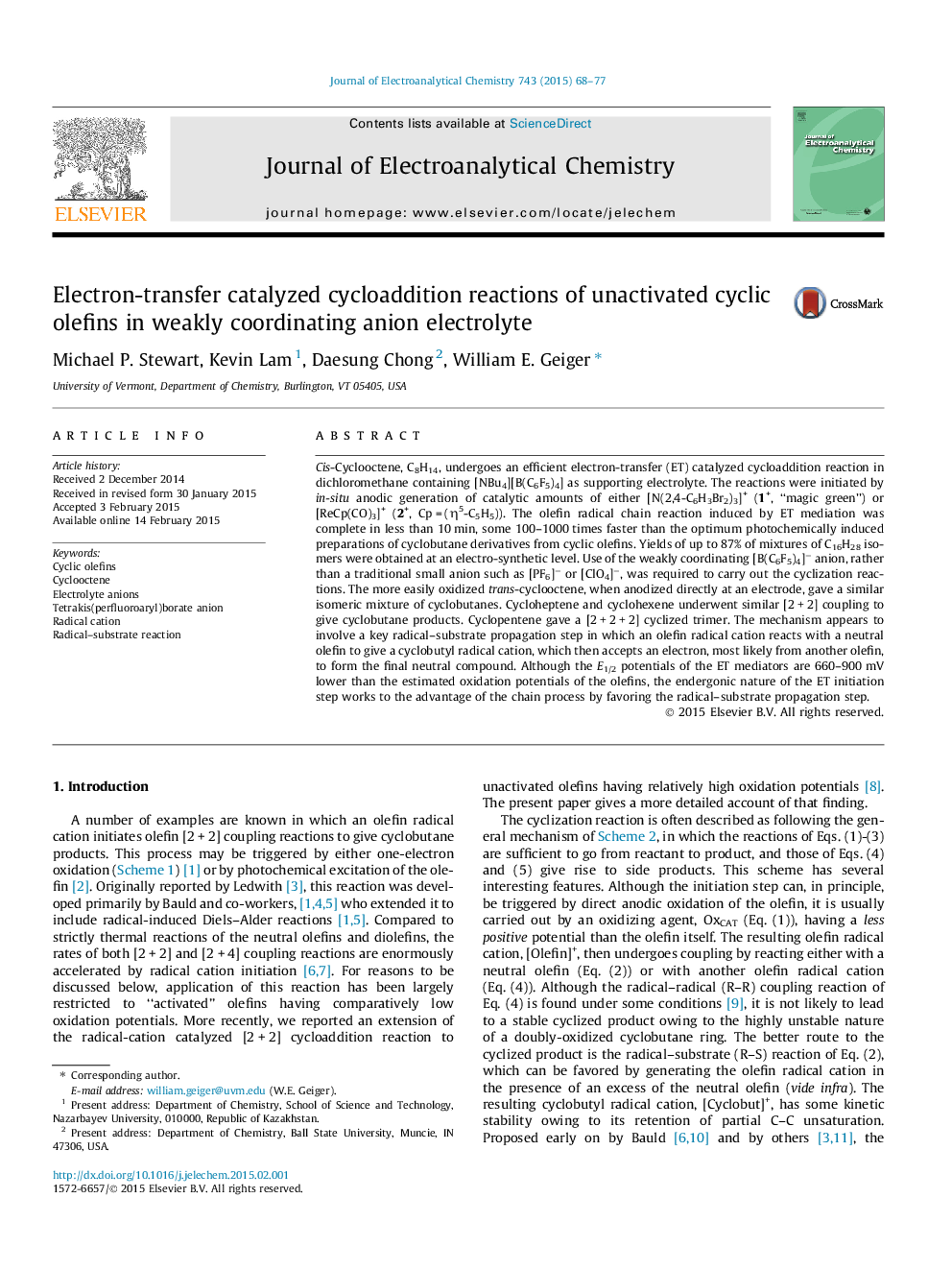| کد مقاله | کد نشریه | سال انتشار | مقاله انگلیسی | نسخه تمام متن |
|---|---|---|---|---|
| 218412 | 463199 | 2015 | 10 صفحه PDF | دانلود رایگان |

• Cyclic olefins are oxidized by homogeneous electron-transfer (ET) catalysts.
• [2 + 2] Cycloaddition reactions give high yields of cyclobutane derivatives.
• Anodically produced ET catalyst initiates radical cation chain reaction.
• Reactions are up to 1000 times faster than photochemically-induced processes.
• Weakly coordinating supporting electrolyte anion must be employed.
Cis-Cyclooctene, C8H14, undergoes an efficient electron-transfer (ET) catalyzed cycloaddition reaction in dichloromethane containing [NBu4][B(C6F5)4] as supporting electrolyte. The reactions were initiated by in-situ anodic generation of catalytic amounts of either [N(2,4-C6H3Br2)3]+ (1+, “magic green”) or [ReCp(CO)3]+ (2+, Cp = (η5-C5H5)). The olefin radical chain reaction induced by ET mediation was complete in less than 10 min, some 100–1000 times faster than the optimum photochemically induced preparations of cyclobutane derivatives from cyclic olefins. Yields of up to 87% of mixtures of C16H28 isomers were obtained at an electro-synthetic level. Use of the weakly coordinating [B(C6F5)4]− anion, rather than a traditional small anion such as [PF6]− or [ClO4]−, was required to carry out the cyclization reactions. The more easily oxidized trans-cyclooctene, when anodized directly at an electrode, gave a similar isomeric mixture of cyclobutanes. Cycloheptene and cyclohexene underwent similar [2 + 2] coupling to give cyclobutane products. Cyclopentene gave a [2 + 2 + 2] cyclized trimer. The mechanism appears to involve a key radical–substrate propagation step in which an olefin radical cation reacts with a neutral olefin to give a cyclobutyl radical cation, which then accepts an electron, most likely from another olefin, to form the final neutral compound. Although the E1/2 potentials of the ET mediators are 660–900 mV lower than the estimated oxidation potentials of the olefins, the endergonic nature of the ET initiation step works to the advantage of the chain process by favoring the radical–substrate propagation step.
Figure optionsDownload as PowerPoint slide
Journal: Journal of Electroanalytical Chemistry - Volume 743, 15 April 2015, Pages 68–77